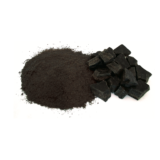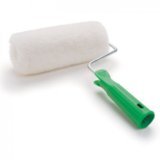|
Particle Size |
95 % through 100 mesh or 200 mesh |
The carnauba tree is a fan palm of the northeastern Brazilian savannas, where it is called the “tree of life” for its many useful products. After 50 years, the tree can attain a height of over 14 metres (45 feet). It has a dense, large crown of round, light green leaves.
Although it has been planted in Sri Lanka and Africa, as well as other parts of South America, only in northern Brazil does the tree produce wax. During the regular dry seasons in Brazil, the carnauba palm protects its metre-long (three-foot) fronds from loss of moisture by secreting a coat of carnauba wax on the upper and lower leaf surfaces. The leaves are cut from September to March and left in the sun to dry. The powdery wax is removed (by beating the shriveled leaves), then melted, strained, and cooled. The final product is yellow or brownish green, depending on the age of the leaves and the quality of processing.
The wax consists primarily of esters of long-chain alcohols and acids. It has a melting point of about 85° C (185° F). Although it has been replaced in many applications by cheaper synthetics, it is still used as a polish for candies and medicinal pills, as a thickener for solvents and oils, and even as a hardener for printing inks.
SPECIFICATIONS
|
Moisture |
1,00 % max |
|
Melting Range |
80-86 o C |
|
Insoluble Impurities |
0,50% max |
|
Volatile Matter at 175o C (Including Moisture) |
1,00 % max |
|
Acid Value |
02 – 07 mg KOH/g |
|
Saponification Value |
78 – 95 mg KOH/g |
|
Ester Value |
71 – 88 mg KOH/g |
|
Residue Ignition |
0,25 % max |
|
Heavy Metals |
20 μg/g max |





